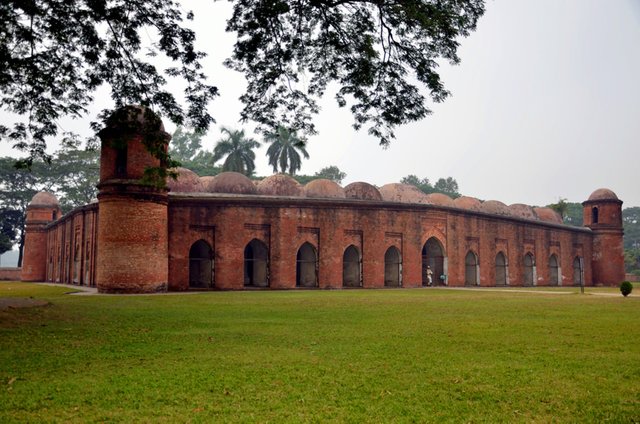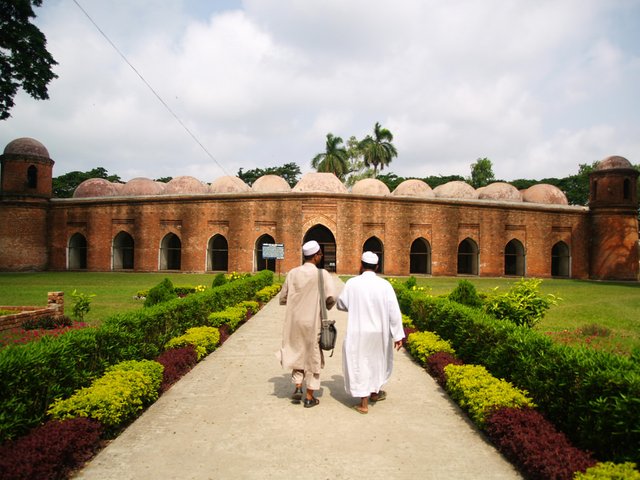Sat Gambuj Mosque.BanglaDesh
The mosque city is situated at the confluence of Ganges and Brahmaputra Rivers, at a maximum of around 60 kilometres (37 mi) from the sea coast. The city is spread over an area of 50 square kilometres (19 sq mi),[4] on the banks of the Moribund branch of the Bhairab River along a 6 kilometres (3.7 mi) stretch (in an east–west direction and about 25 kilometres (16 mi) width in north–south direction[3]), which was part of the Sundarbans mangrove forests. According to numismatics, it was built in the 15th century and was known by the name of Khalifatabad during the 16th century. Given the nature of the heavy forest habitat and it being inhabited by tigers, the city was developed with unique infrastructure to make it inhabitable.[2][3][4][6][7] Today all monuments are set in the unspoilt environment of what is now farmlands, surrounded by palm trees.[1]

The history of the present-day Bagerhat is traced to the Bengal Sultanate under the rule of Sultan Nasir al-din Mahmud Shah (1442–1459[8]). It was established by the Ulug Khan Jahan (1433–1459), an administrator under the sultanate in the 15th century; an inscription on his tomb here mentions 1459 as his date of death, testifying the construction of the city in the mid 15th century. He was responsible for establishing a planned township with roads, bridges, and water supply tanks (ponds – two are still surviving: the Ghoradighi and Dargadighi), cisterns, and a very large number of mosques and tombs, and palaces and his own mausoleum, all attributed in the same “Khan Jahan Style”; Khan Jehan lived in the town and did extensive philanthropic work.[2][7] It is mentioned that the Delhi Sultanate, for political and religious reasons, wanted to establish an outpost of Islam in the then-remote part of India in Bengal and deputed Ulug Khan Jahan to brave this task.[2][9]

Ulug Khan was known for his unique capability as an administrator (administered the districts of Jhenaidah, Sathkira, Patuakhali, and Barisal in South Bengal) and a builder. He was also a pir, a saintly person who shunned personal aggrandizement (who rejected royal titles and did not issue any mint in his name). His tomb is thus venerated in Bangladesh and attracts a large number of pilgrims.[7]
A study of ten mosques and tombs seen in the town reveals that seven of them – Shait Gumbaz Mosque, which adjoins the Ulug Khan Tomb, Ranbijaypur Mosque, Bibi Begni Mosque, Shingra Mosque, Chunakhola Mosque, the Nine Domed Mosque are in Ulugh Khan style. The other three mosques of a later period are the Ten Domed Mosque, Rezai Khan Mosque and Zinda Pir Tomb.[3][7]
In 1895, an extensive survey of the area was conducted, and restoration was put into effect in 1903–04 on the Shait Gumbaz mosque. In 1907-8 part of the roof and 28 domes were restored.[10]
In 1982–83, UNESCO drew up a master plan for the Bagerhat area and it became a World Heritage Site in 1985.[11]